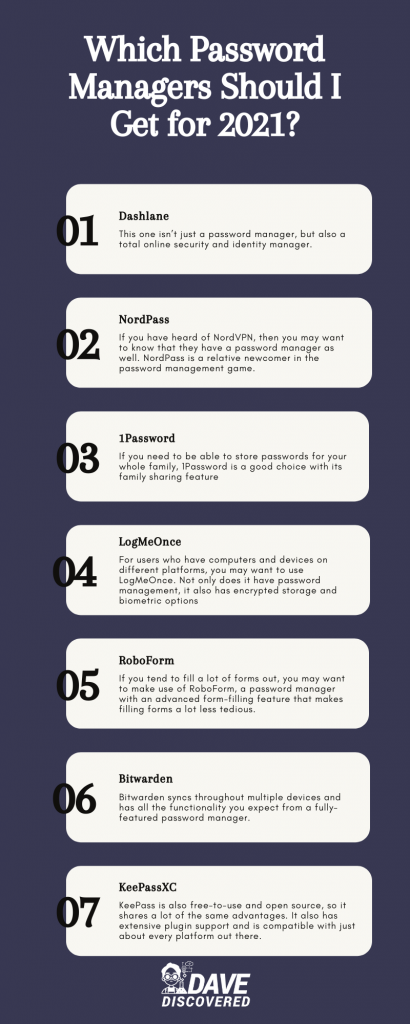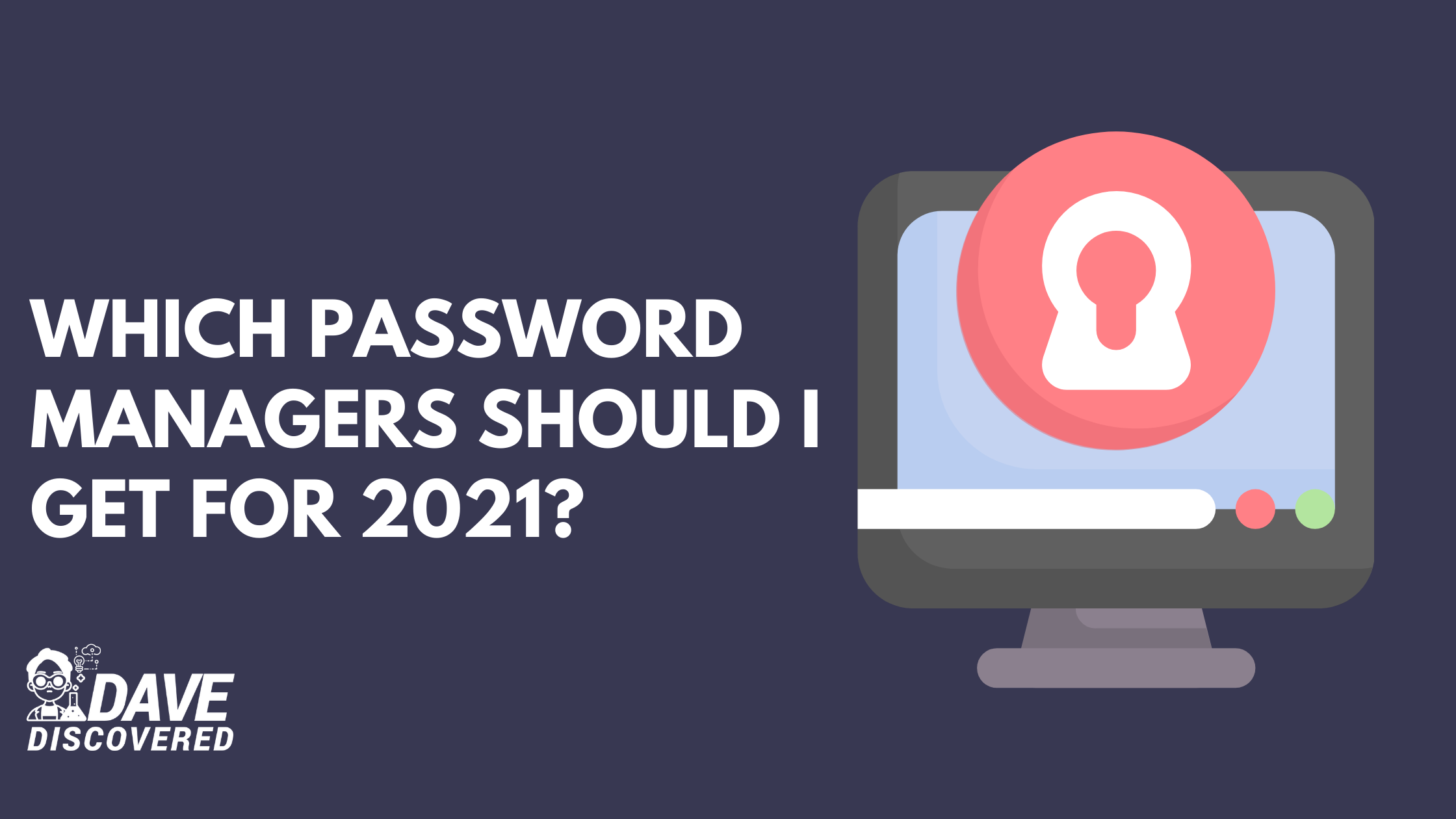It’s often advised that you should never use the same password for all of your online accounts. While it’s indeed sensible advice, it’s quite difficult for most to remember as many as hundreds of passwords, so they tend to use the same password for their accounts. Of course, this makes compromising their accounts a lot easier by malicious agents.
That’s why password managers have become a must-have for internet users. Not only do they store passwords for you, but it also generates strong passwords for you to use in your accounts. Obviously, this makes learning how to use a password manager an important piece of knowledge to have while using the internet on a daily basis.
Let’s take a look at the best password managers out there to see which one is best for you.

Are Password Managers Safe?
Password managers are quickly becoming the tool of choice for managing an ever-increasing number of passwords while making sure that each password is different. Having a vault of passwords locked behind a master password means you only have to remember one password to get access to the rest.
That does mean you have to make sure the master password is both strong and can be remembered at all times. Otherwise, if you lose access to your password manager account, you potentially lose access to all your passwords.
Free password managers are great for individuals who just need a basic password manager to autofill login screens or be able to copy and paste their passwords. As for paid password managers, they may not be that sensible for regular individuals, they make sense for organizations that need a centralized system for their passwords.
Make sure your password manager has at least two-factor authentication to make sure that you’re the only one who will be able to access your passwords.
Best App for Password Managers 2021
We took a look at both paid and free app password managers to see which ones are the very best among them. Each of them have their own strengths and weaknesses, so you should look carefully at which one will work best for you.
Dashlane
This one isn’t just a password manager, but also a total online security and identity manager. But if you just need a password manager, you can just use the free version, which lets you store 50 passwords in one device.
Dashlane has plans for both individuals and businesses, letting you manage passwords for an unlimited number of accounts in multiple devices. With these paid plans, not only do you get a password manager, but you also get a reliable VPN and secure document storage for your most important files.
NordPass
If you have heard of NordVPN, then you may want to know that they have a password manager as well. NordPass is a relative newcomer in the password management game, but they’re already making waves with browser plugins for multiple browsers, as well as apps for multiple platforms, both desktop and mobile.
The free version is actually pretty decent, and it also has two-factor authentication to keep all your passwords secure. It can store encrypted passwords, generate strong passwords, and securely store credit card and banking details as well for faster online shopping checkouts.
1Password
If you need to be able to store passwords for your whole family, 1Password is a good choice with its family sharing feature, along with business options for organizations. But even if you’re just using it for yourself, 1Password is still a strong choice as it protects you from breaches, keyloggers, and phishing attempts.
It has a browser verification system that makes sure your account is actually being used by you. This goes for the rest of your family as well, who can use 1Password to store their account credentials securely as well.
LogMeOnce
For users who have computers and devices on different platforms, you may want to use LogMeOnce. Not only does it have password management, it also has encrypted storage and biometric options, thus making it quite good as a security solution. Not only can you store your passwords, but also your important documents, and secure them with encryption.
As with other password managers, LogMeOnce has Single Sign On functionality, which lets you stay logged in and not have to re-enter your login details over and over again in the same device. To keep that secure, it also has two-factor authentication to make sure only you get to log in.
RoboForm
If you tend to fill a lot of forms out, you may want to make use of RoboForm, a password manager with an advanced form-filling feature that makes filling forms a lot less tedious. It has plugins for all major browsers, as well as mobile apps for both iOS and Android. It offers a lot of functionality in its free version, so you can start with that.
But if you want to sync passwords across your devices, you’ll have to pay around $17 per year for RoboForm Everywhere, or twice that for the family version. That’s actually an affordable price for a password manager that features multi-factor authentication and password auditing.
Bitwarden
This one is completely free, yet is one of the best password managers out there. Bitwarden syncs throughout multiple devices and has all the functionality you expect from a fully-featured password manager. For most regular users, they would use this as their main password manager due to how fully-featured it is while still being free-to-use.
What makes it even better is that it’s open source software, so potentially anyone can take Bitwarden’s code and improve on it. But what’s already there is pretty good, with multi-device sync, optional self-hosting, and unlimited online storage. Its premium plans add more features like password auditing.
KeePassXC
Much like Bitwarden, KeePass is also free-to-use and open source, so it shares a lot of the same advantages. It also has extensive plugin support and is compatible with just about every platform out there. KeePass is fully endorsed by the Electronic Frontier Foundation, giving it a great degree of credibility with security-conscious power users.
However, since it has been around since the days of Blackberry and even Palm OS, it’s not exactly on the bleeding edge of design. It’s quite old, and there are plenty of newer password managers out there that can do what it does. If you’re looking for a more updated version of KeePass, you can take a look at KeePassXC.

